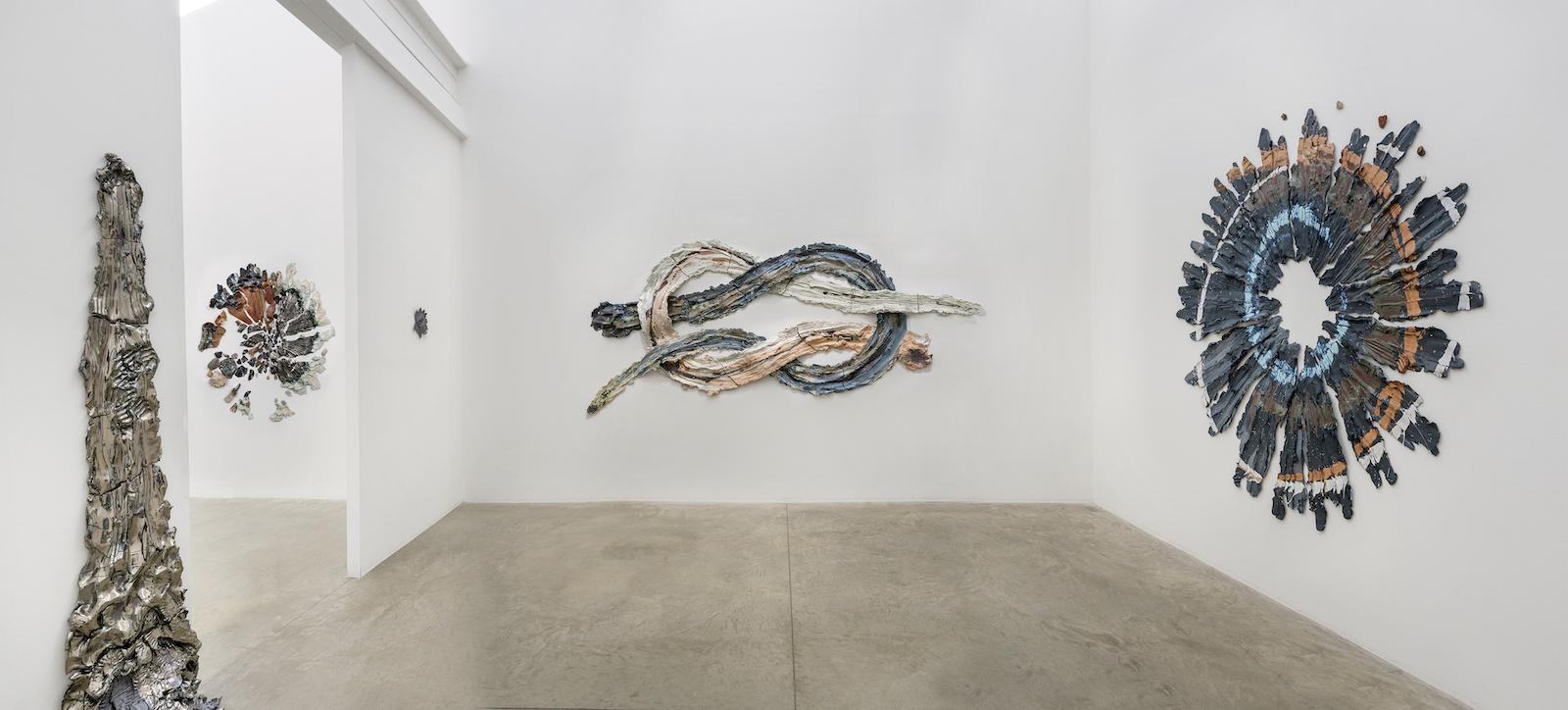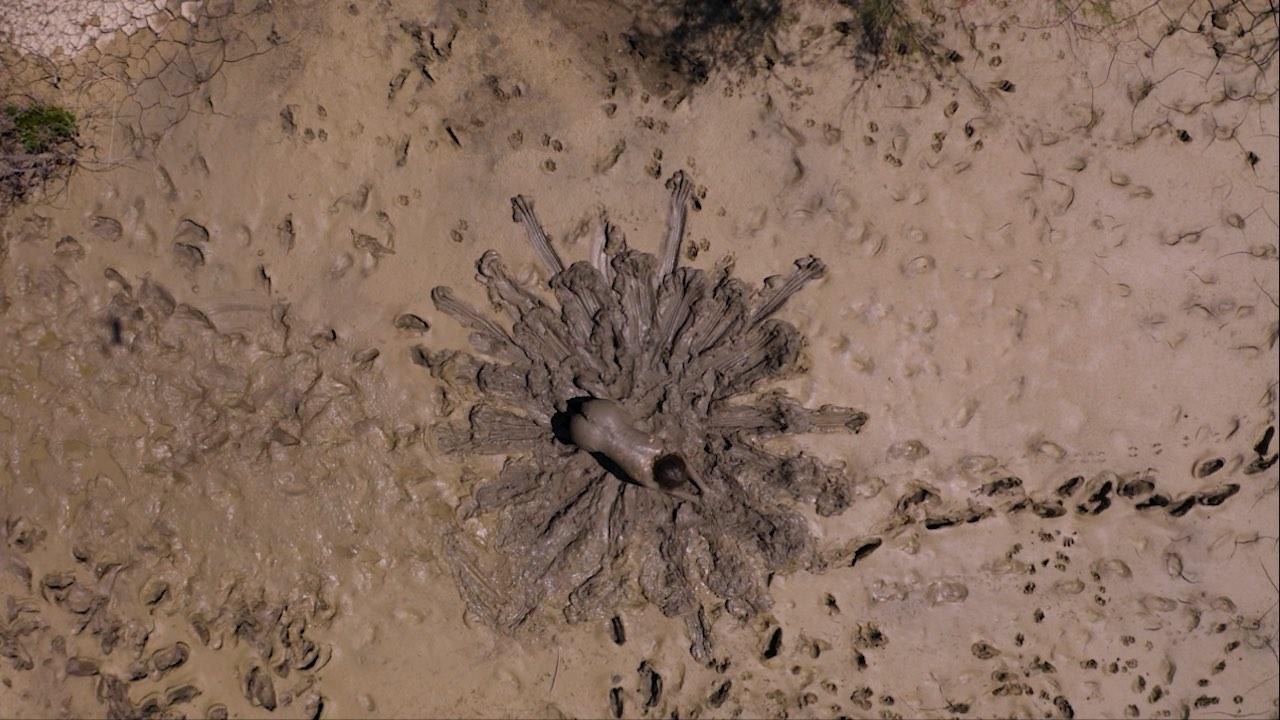Melding performance and craft have been her métier. Ruais performs naked, throwing herself into the clay, and then pushing it, stretching it, stomping on it, and spinning around in it, as if to burrow her way down beneath the earth. And she uses drones to video record the process.
Last summer, working with ceramist Ralph Scala, she harvested raw clay from an ancestral Puebloan mine in the Galisteo Basin of New Mexico. The video of her performance there, Digging In, Digging Out (2021), which had just been on view at albertz benda gallery, allowed mesmerized viewers to feel they were collaborating over the course of its twelve minutes. They witnessed Ruais burrowing in to the sound of wind, the whirring of a drone, and her scraping of the clay. In the gallery, the video could also be viewed through a smashed hole in the wall of an adjacent gallery with debris scattered on the floor beneath it. On the opposite wall hung a circular construction Letting the Fire In (2021) composed of fragments of pit-fired stoneware and random bits.







![Brie Ruais [b. 1982] Making Space From the Inside (Rio Tinto Kennecott), 130lbs, 2021. Glazed stoneware, hardware. 58 x 56 x 2 1/2 inches, 147.5 x 142 x 6.5 cm.](/sites/default/files/styles/media_crop/public/brie-ruais-b-1982-making-space-inside_0.jpg?itok=AFEW2U4l)
![Brie Ruais [b. 1982] Exiting Wound, 130lbs (Silver Peak Lithium), 2021. Glazed and lustered stoneware, hardware. 64 1/2 x 64 x 2 inches, 164 x 162.5 x 5 cm.](/sites/default/files/styles/media_crop/public/brie-ruais-b-1982-exiting-wound.jpg?itok=s5nLFksl)
![Brie Ruais [b. 1982] Falling Apart, Holding Together, 2021. Stoneware, glaze, found rocks, cement rubble. 60 x 60 x 3 inches, 152.5 x 152.5 x 7.5 cm. Courtesy the artist and albertz benda, New York. Photo- Stefan Hagen 2](/sites/default/files/styles/media_crop/public/brie-ruais-b-1982-falling-apart.jpg?itok=w0PFVlzC)



















![DEl Kathryn Barton [Australian b. 1972] the more than human love , 2025 Acrylic on French linen 78 3/4 x 137 3/4 inches 200 x 350 cm Framed dimensions: 79 7/8 x 139 inches 203 x 353 cm](/sites/default/files/styles/image_5_column/public/ab15211bartonthe-more-human-lovelg.jpg?itok=wW_Qrve3)



